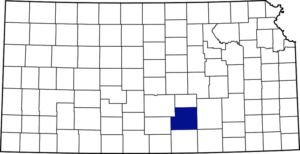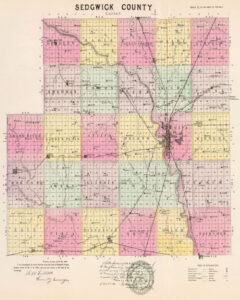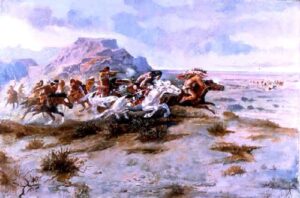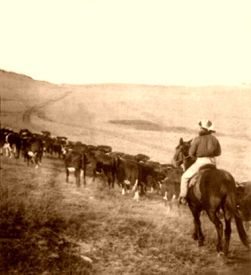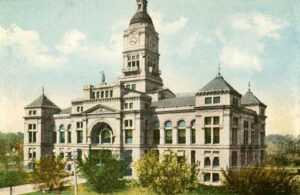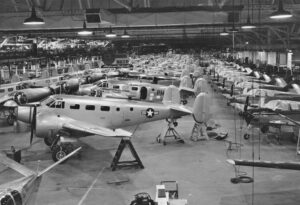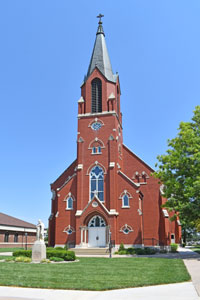Towns & Places:
Andale
Bentley
Cheney
Clearwater
Colwich
Derby
Garden Plain
Goddard
Greenwich
Haysville
Maize
Mount Hope
Kechi
Peck
Valley Center
Viola
Wichita – County Seat
Cheney State Park & Reservoir
Arkansas River
Horseshoe Lake
Lake Afton
Little Arkansas River
Meadow Lake
Ninnescah River
Wilson Lake
Sedgwick County, Kansas, located in the southern part of the state, was formed from Butler County by an act of the legislature in 1867. The county was named in honor of John Sedgwick, a major general in the Union Army in the Civil War, who was killed at Spottsylvania Court House, Virginia, in May 1864. As of the 2020 census, the population was 523,824, making it the second-most populous county in Kansas. Its county seat is Wichita, the most populous city in the state.
Long before the county was organized, this area was a camping ground for the Osage and Wichita Indian tribes. However, conflict with the Osage tribe in the 1750s drove the Wichita further south. Before European settlement, the area was claimed by the Kiowa. Francisco Coronado and Kit Carson explored it. The earliest European settler in the region was M. DuTissenet, a Frenchman operating under the direction of the governor of Louisiana in 1719. DuTissenet brought soldiers, traders, and hunters who soon populated the area.
The area became part of Kansas Territory in 1854 and then the state of Kansas in 1861.
The Wichita people returned in 1863, were driven from their land in Indian Territory (Oklahoma) by Confederate forces during the Civil War, and established a settlement on the banks of the Little Arkansas River.
The county is 135 miles west of the Missouri line, 250 miles east of Colorado, and is the second county north of Oklahoma.
The general surface is rolling prairie, level in places. When the county was settled, the timber belt along the streams was unusually wide, averaging more than a mile, and the bottomlands were also broad and comprised 50% of the area. Well water was accessible at a depth of from 10 to 50 feet. The Arkansas River enters the northwest part of the county and crosses to the southwest. The Little Arkansas River enters in the north and flows south, joining the larger stream at Wichita. The north and south forks of the Ninnescah River enter and unite in the southwest, the main stream flowing southeast into Sumner County. Cowskin Creek has its source in the central part and flows southeast. Limestone, clay, and gypsum were abundant.
The first settlers were William Greiffenstein, who located on Cowskin Creek and established a trading post in 1865; Charles Whittaker took a claim in the Little Arkansas Valley in the spring of 1866; Durfee & Leedrick built a ranch on the Little Arkansas River in 1867; about the same time Lewellen & Davis opened a post for trading with the Indians, and Eli Waterman and John Lawton located in the county. In 1868 came J. R. Mead, H. W. Vigus, William Whitman, M. A. Sales, D. S. Munger, Milo B. Kellogg, John Allison, Charles Hunter, F. H., and Harvey Dunlap, Robert and William Houston, David Edmounds, John D. Goyler, James French, David Wousick, and about a score of others. That year, Sedgwick County was organized into a township and attached to Butler County for judicial purposes. D. S. Munger was appointed the first justice of the peace, and the first election was held in November, at which 35 votes were cast. The officers chosen were: Trustee, M. A. Sales; clerk, H. W. Vigus; treasurer, S. B. Boyd; superintendent of public instruction, Mrs. Sales (mother of M. A. Sales).
In 1867, after the Civil War, the Wichita Indians returned to Indian Territory.
An attempt to affect county organization was made in the fall of 1869 when an election was held, which was declared void by the governor on account of irregularities. A new census was taken, and in the winter of 1870, the governor issued a proclamation organizing the county, designating Wichita as the county seat, and appointing S. C. Johnson, William Lockard, and Henry Stein commissioners. The commissioners appointed John Ward as clerk, divided the county into three election districts, and called an election in April for the choice of officers and the selection of a permanent county seat. The contest was between Wichita and Park City. The total vote was 260, many of which were said to have been fraudulent, but of which Wichita received the majority. The officers elected were: County clerk, J. M. Steele; county attorney, T. J. Fulton; register of deeds, L. F. Buttles; clerk of the district court, D. A. Bright; probate judge, Reuben Riggs; sheriff W. N. Walker; treasurer, S. C. Johnson; superintendent of public instruction, John P. Hilton; surveyor, William Finn; coroner, E. B. Allen, and commissioners, N. A. English, T. S. Floyd, and Alexander Williams. J. M. Steele and H. E. Vantrees were made justices of the peace. The first term of the district court was held in June 1870 and was presided over by the Honorable W. R. Brown.
There were several Indian scares in Sedgwick County. Although no fighting occurred here, a detachment of the Fifth United States infantry, under the command of Colonel Barr, was stationed on the site of Wichita in 1867. At the expiration of their term of enlistment, some men became settlers in the vicinity. During the last Indian scare in 1874, more than 1,000 people from Sedgwick, Kingman, Sumner, and Harvey Counties came to Wichita in a single day. In a few days, they all returned to their homes. Shortly after, it was reported that the Comanche and Apache were about to raid southern Kansas. Governor Thomas A. Osborn ordered S. M. Tucker of Wichita to raise a company of 50 men for Indian service. He sent Adjutant General Morris to that point with commissions for the company’s officers, arms, and equipment. Mr. Tucker was made captain; Cash Henderson, first lieutenant; and Mike Meagher, second lieutenant. They started the campaign on the morning of July 11 and were gone for ten days but saw no Indians.
In common with other border territories, Sedgwick County was the scene of several murders and outrages by “gangs” and ruffians, most of whom at some time or other “died with their boots on.” Six such deaths occurred in 1873 while Wichita was a cattle shipping point.
The first courthouse was built in 1872 and was located at the corner of First and Main Streets. The city court and jail occupied the basement. In 1874, a county jail was erected.
In August 1871, the county voted for $200,000 to aid in the construction of a railroad. During the last year, before the road reached Wichita, it was estimated that 800,000 cattle were driven through Sedgwick County.
Before this time, all travel was by wagons and stagecoaches, the main road known as the Kingman Trail. A stage station was maintained at Wichita, with a ferry across the Arkansas River. The first railroad was the Wichita & Southwestern, built in 1872 by a company of local capitalists. At that time, Sedgwick County was the northern terminus of the Chisholm Trail for a short time and developed into an important cattle center. It remained the terminus of the trail until 1876.
The Sedgwick County Agricultural Society was organized in 1873, and the first exhibition was held in October. The following year, due to drought and grasshoppers, there was nothing to exhibit, and the county had to accept outside aid. In 1875, the crops were bountiful, but in 1876, the grasshoppers again caused considerable damage.
In 1880, the St. Louis and San Francisco Railroad was completed to Wichita. That year, the assessed property valuation in the county was $3,117,460, a remarkable growth from practically nothing in 1870.
In 1882, the value of garden produce and animals sold for slaughter was $610,000, and the number of bushels of grain raised was 5,332,320, of which 3,665,610 bushels were corn. In 1884, out of an abundant corn crop, Sedgwick County sent 33 carloads to the food sufferers in Ohio to recognize the help it had received ten years before. Although, as a reaction to the boom of the 1880s, times were a little dull in the towns for the next few years, the land kept producing crops that formed the basis of general prosperity. At that time, the population of the county was 19,166
In 1885, the Missouri Pacific Railroad was built from the east, and a little later, the Wichita, Anthony & Salt Plains, and the Wichita & Colorado lines were projected by local capitalists. Both became a part of the Missouri Pacific system. About that time, the Atchison, Topeka & Santa Fe Railroad was built from Sedgwick to Wichita, then west to Kingman, the people of Wichita furnishing the right of way from that point to the west line of the county. In 1886, a line known as the Kansas Midland was built from Wichita to Ellsworth. It became a part of the St. Louis & San Francisco system.
In 1887, the Chicago, Kansas, and Nebraska Railway built a branch line north-south from Herington to Caldwell. This branch line connected Herington, Lost Springs, Lincolnville, Antelope, Marion, Aulne, Peabody, Elbing, Whitewater, Furley, Kechi, Wichita, Peck, Corbin, Wellington, and Caldwell. The Chicago, Kansas, and Nebraska Railway gradually began building to Fort Worth, Texas, in the following years. In 1891, the railway was taken over by the Chicago and Rock Island Railroad.
In 1888, a new courthouse was erected by William Henry Sternberg. The Italian Renaissance-style building cost $220,000 and was paid for by 20-year bonds.
The legislature of 1893 authorized the establishment and maintenance of an industrial school at the county’s expense, the amount to be spent for buildings and grounds not to exceed $10,000.
In 1900, the county’s population was 44,037.
The last railroad constructed in Sedgwick County was the Kansas City, Mexico & Orient in about 1906. It connected this territory with the rapidly developing southwest and was one of the most valuable lines in the county. Besides these roads, which passed through Wichita, a branch of the Atchison, Topeka & Santa Fe ran from east to west through the southern part and another line of the same road cut across the southeastern corner.
In 1910, Sedgwick County was surpassed by only four counties in the value of her farm products, which in 1910 were worth $5,616,683. Of this amount, corn, the largest field crop, was worth $1,325,088; wheat, $490,785; oats, $676,074; hay, $645,812; animals sold for slaughter, $1,539,012. The assessed valuation of the property in 1910 was $108,139,773. The county affairs are in excellent condition financially. The public buildings were paid for, and bridges and roads were in good shape. At that time, the county’s population was 73,095.
In 1911, Sedgwick County was one of the three largest tax-paying counties in the state. That year, a branch of the state entomological department was established in Sedgwick in June 1911, which greatly assisted the farmers in ridding their farms of pests and increasing the produce volume.
The early development of the aircraft industry, beginning just before and during the 1920s, saw the establishment of Cessna, Beech, Boeing, and other companies that made Wichita the center of the industry. Wichita is still a leader in military, commercial, and small aircraft production.
In 1954, the 6-story clock tower was damaged by a windstorm and had to be removed. However, other than the shorter central tower, it appears very much the same.
In 1959, the old courthouse was replaced with a new 11-story courthouse. However, the old courthouse still serves the citizens of Sedgwick County by housing various county offices and commissions. The old courthouse is listed on the National Register of Historic Places.
Sedgwick County was the setting for the murders committed by the BTK strangler from 1974 until 1991. Dennis Rader, an employee of Park City, was arrested in early 2005 after he began sending incriminating letters taunting the police in 2004. He had not been heard from since 1979. Rader was captured and sentenced to ten life sentences, which he is serving at the El Dorado Correctional Facility in El Dorado, Kansas.
©Kathy Alexander/Legends of Kansas, updated October 2023.
Also See:
A Kansas Roadtrip to Old Cowtown Museum (Legends Of America Travel Blog)
Sources:
Blackmar, Frank W.; Kansas: A Cyclopedia of State History, Vol I; Standard Publishing Company, Chicago, IL 1912.
Cutler, William G; History of Kansas; A. T. Andreas, Chicago, IL, 1883.
Kansas Memory
Kansaspedia
Sedgwick County
Wikipedia


